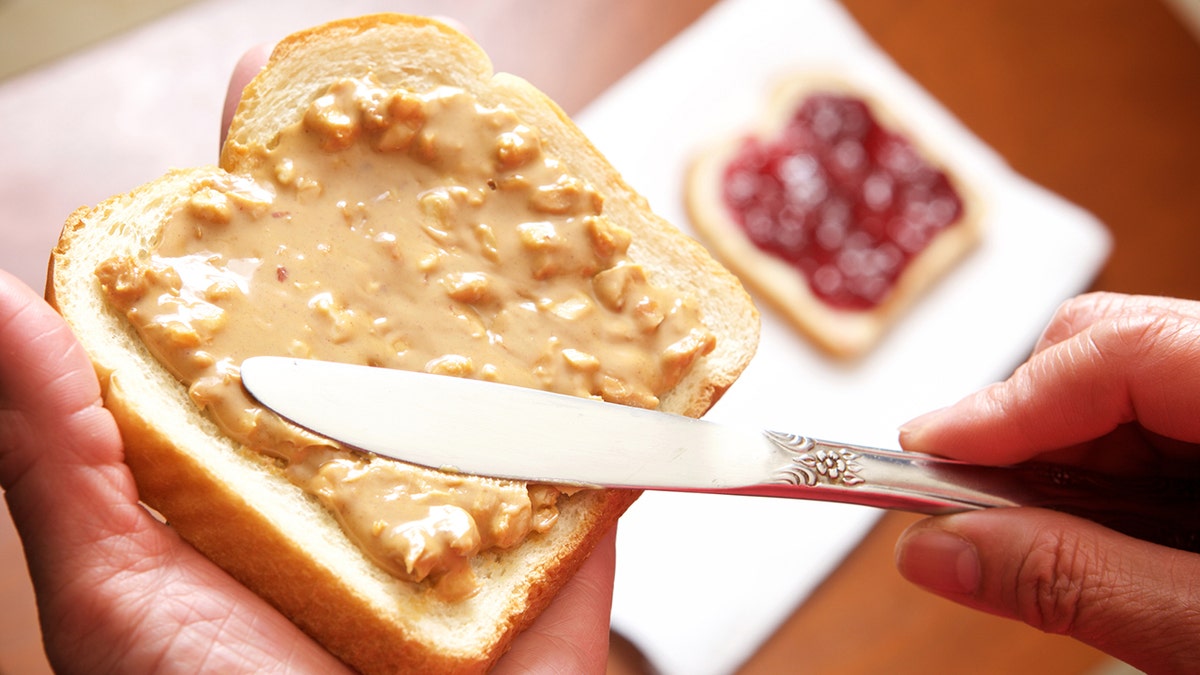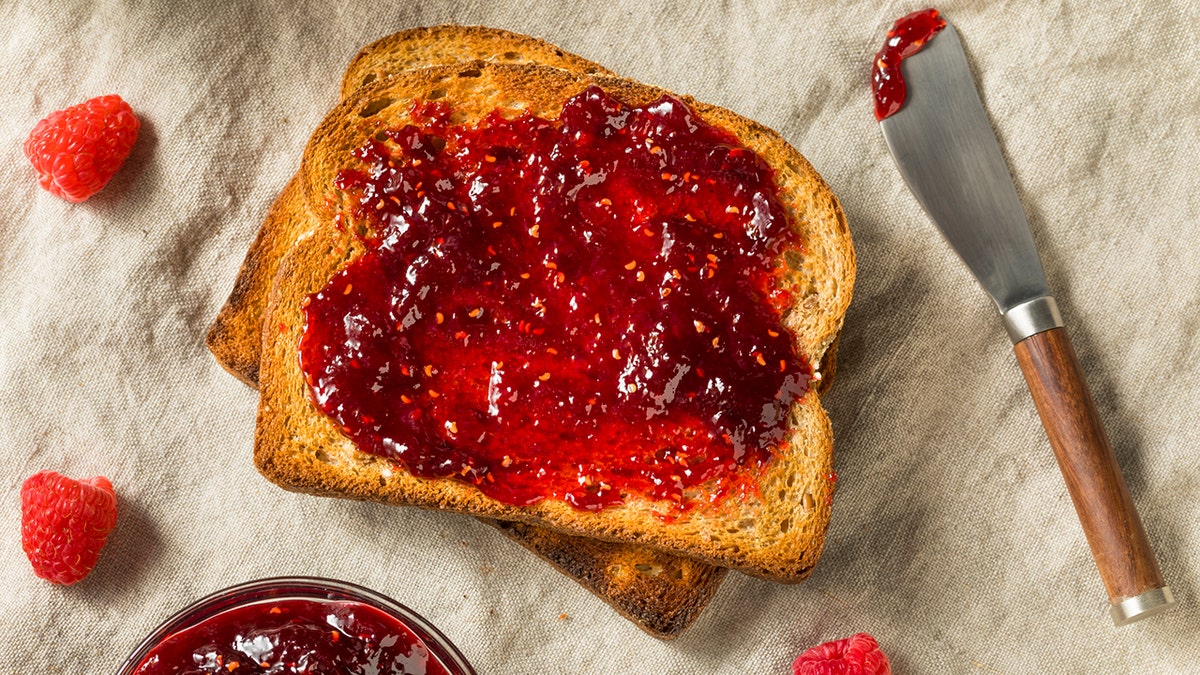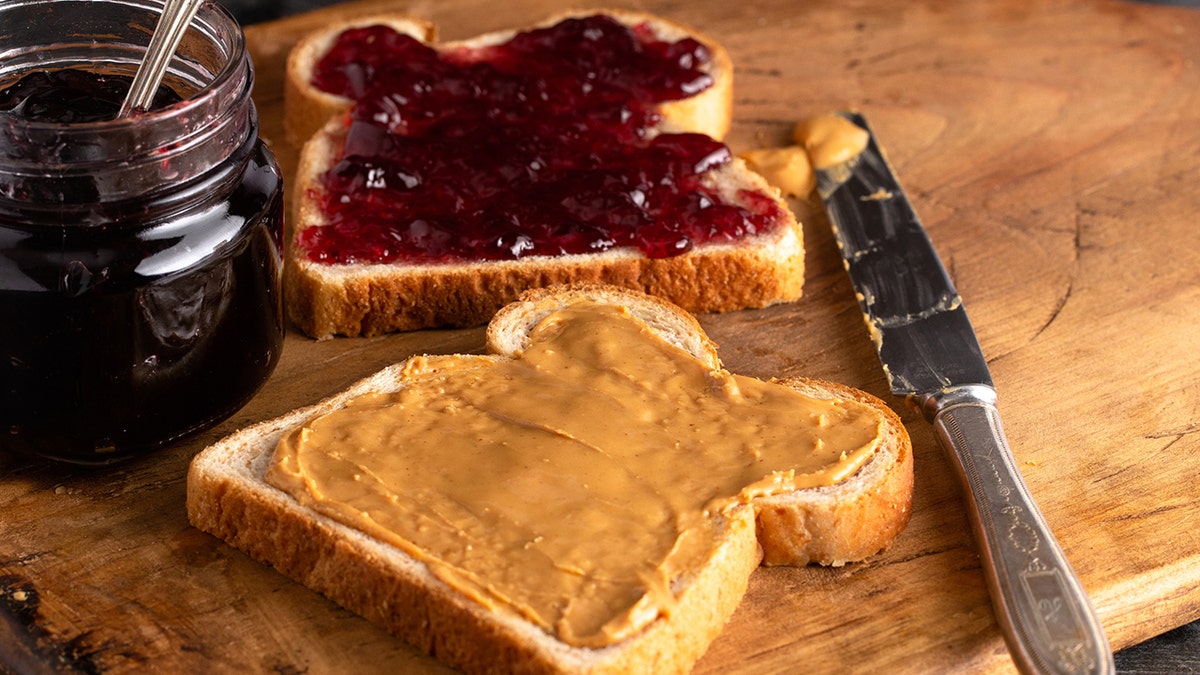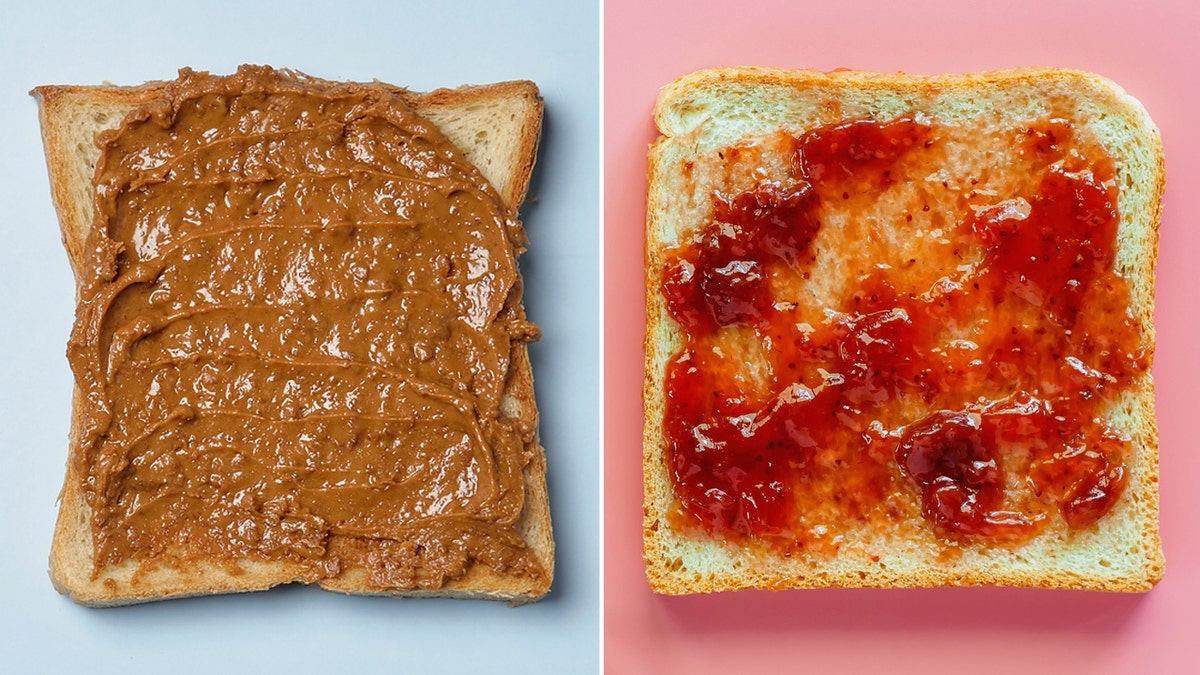Fox News Flash top headlines for July 31
Fox News Flash top headlines are here. Check out what's clicking on Foxnews.com.
Before you make your next PB&J, add some jelly on toast or plop a spoonful of peanut butter into your oatmeal, you might want to consider if one is a "better" spread to reach for than the other.
"Peanut butter and jelly are popular spreads valued for their taste and convenience, yet their nutritional compositions can vary considerably due to the inclusion of added sugars and other ingredients," said Michelle Routhenstein, preventive cardiology dietitian at EntirelyNourished.com, based in New York City.
Here's what you should know about the nutritional profiles of these ubiquitous spreads.
PEAS VS. CARROTS: WHICH ARE HEALTHIER FOR YOU? DIETITIANS WEIGH IN
You might be surprised …
Nutrition specs of peanut butter

Peanut butter and jelly are great when paired together, but how much do you know about the two spreads separately? (iStock)
Apparently, not all peanut butter is created equal.
Jason Levee, a registered dietitian with Whole Family Health in the New York City metropolitan area, said peanut butter that’s made from 100% peanuts is a great choice to add to your pantry.
GEORGIA PEANUTS: HOW A LOWLY LEGUME BECAME A CULINARY STAPLE
In this scenario, peanut butter contains 8 grams of protein, 16 grams of primarily heart-healthy unsaturated fat and 3 grams of fiber per two-tablespoon serving, he said.
Routhenstein also highlighted that peanut butter is rich in nutrients such as vitamin E, magnesium and potassium.
Plus, it contains beneficial plant compounds like resveratrol, which may support heart health, Routhenstein said.
While Levee doesn't diminish peanut butter’s impressive nutrition profile, he does want consumers to be aware that peanut butter packs 180 calories in just two tablespoons.
"Now, this doesn’t mean that you should necessarily eat two tablespoons every time you have peanut butter — there are different applications that call for different amounts," he said.
GUACAMOLE VS. HUMMUS: IS ONE 'BETTER' FOR YOU THAN THE OTHER?
Levee advised using one-to-two tablespoons when pairing peanut butter with a banana or an apple for a snack, and even less if you’re drizzling peanut butter atop oatmeal or yogurt.
What peanut butter should you buy?
When you’re making a sandwich, however, experts say it’s fine to use the full two tablespoons or a bit more.

When it comes to buying peanut butter at the grocery store, dietitians recommend finding something that has a list containing short and simple ingredients. (iStock)
When selecting a peanut butter to purchase, both dietitians say the shorter and simpler the ingredient list, the better for your health.
All that peanut butter should include is peanuts — and perhaps a little salt.
BUTTER VS. MARGARINE: IS ONE 'BETTER' FOR YOU THAN THE OTHER?
"There’s no need for any other ingredients in order to make great-tasting and satisfying peanut butter," said Levee, who referred to peanut butter products that have added sugars and/or hydrogenated oils.
"Peanut butter (and other nut butters) may be difficult to manage from a portion perspective, so including these ingredients can quickly add up to lots of added sugars and hydrogenated oils with their respective negative effects on blood sugar and cholesterol," he added.
Nutrition specs of jelly
Before you liberally spread jelly on a piece of toast or slather it onto a croissant, it’s important to note that you could easily log as much sugar from jelly as from a candy bar.

Jelly is a fruit-based spread which means it has a lot of natural sugar from the fruit juices, but even more due to additives. (iStock)
As Routhenstein explains, jelly is a fruit-based spread typically made from fruit juice, sugar and pectin, with two tablespoons clocking in at 100 calories and 26 grams of carbohydrates — all from sugars.
GREEK YOGURT VS. REGULAR YOGURT: IS ONE 'BETTER' FOR YOU THAN THE OTHER?
Since store-bought jelly is often made with additives like corn syrup and high fructose corn syrup, the majority of those sugars can come from added sugars as opposed to those naturally occurring in fruit.

Due to food labeling laws, anything marked as "low sugar" or "no sugar" cannot be called jelly on the packaging. (iStock)
"While jelly adds sweetness to sandwiches and snacks, it's important to choose varieties that are low in added sugars and free from artificial additives," said Routhenstein.
Levee pointed out that due to food labeling laws, low-sugar and no-sugar added options cannot referred to as "jelly" on the packaging.
"However, you can often find fruit spreads which are made principally from fruit and pectin," he continued, noting that pectin is naturally occurring in many fruits and helps to form the jelly-like consistency.
For more Lifestyle articles, visit foxnews.com/lifestyle
"Some of these fruit spreads may contain only 30 calories per tablespoon with no added sugar; they will only have the naturally occurring sugar from the fruit," Levee clarified of these healthier options.

When it comes to nutrition, both peanut butter and jelly offer a variety of benefits for your overall health. (iStock)
Is peanut butter or jelly ‘better’ for you?
When it comes to peanut butter versus jelly, peanut butter is the better spread from the standpoint of nutrient density.
"While peanut butter is more calorically-dense compared to jelly, it provides substantial nutritional benefits such as heart-healthy fats, vitamin E, resveratrol, protein and fiber, which promote satiety and overall health," Routhenstein said.
CLICK HERE TO SIGN UP FOR OUR LIFESTYLE NEWSLETTER
Overall, you can likely use peanut butter in more diverse culinary applications than jelly.
"Peanut butter's versatility allows it to enhance the flavor and nutritional value of vegetables, fruits, and various sauces, marinades and dishes, making it a valuable addition to a balanced diet," Routhenstein said.

Peanut butter might be more "nutrient dense," so when it comes to the healthier of the two food choices, that is up to the individual. (iStock)
Still, Levee maintained that there is no clear-cut answer here.
That’s because when it comes to personal diets, the amount you eat and the frequency that you eat a given food play major roles in determining overall healthfulness, he said.
CLICK HERE TO GET THE FOX NEWS APP
"For example, using a small amount of jelly to enhance the palatability of chicken breast may help someone to reach their protein goal for the day, while overeating peanut butter may result in unintentional weight gain, which may not be healthy," he said.
So yes, peanut butter may be a nutrient-dense choice — but which spread is "healthier" for you appears to be an individualized matter, according to dietitians.





















